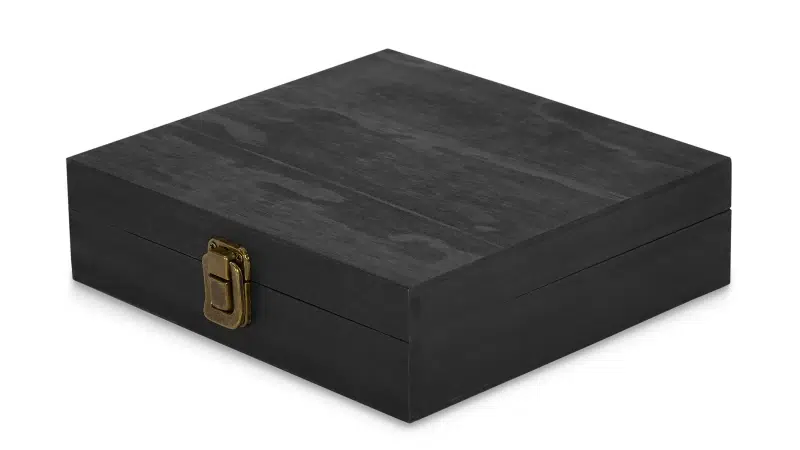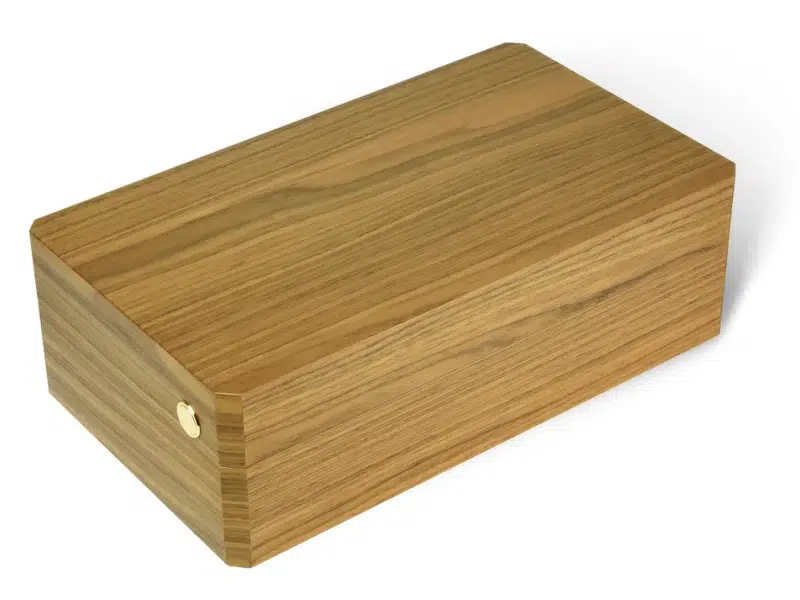
Matte finishes offer understated elegance, but they’re also the hardest to get right—especially in large production runs. Even small changes can make one box look different from the next.
To maintain matte finish consistency across large cigar box orders, manufacturers must control every detail—from environment to equipment, from materials to human technique.
As someone who has overseen thousands of matte-finished cigar boxes, I’ve learned where things go wrong and how to lock in that flawless, velvety look every time.
What are the common challenges in achieving a uniform matte finish on wood surfaces?
Matte finishes are less forgiving than gloss—any variation in thickness, spray angle, or drying condition can leave streaks, blotches, or sheen inconsistencies.
Typical Challenges:
- Gloss level shifts between boxes or panels
- Cloudy or patchy surfaces caused by uneven pigment or flattening agent distribution
- “Hot spots” or “wet edges” where the finish turns semi-gloss
- Visible spray overlap1s or lap marks from poor technique
- Surface dust or fiber lift, especially on open-pore woods
| Issue | Visual Impact |
|---|---|
| Uneven sheen | One box looks duller than next |
| Spray overlap | Lines or haze across the surface |
| Poor flattening control | Patches of semi-gloss vs. matte |
| Surface contamination | Specs or fibers under coating |
✔ Matte finishes require total surface cleanliness and precise spray discipline.
In one of our early batches for a cigar brand’s matte black series, half the boxes had visible panel sheen variation under angled light. We had to completely retrain our spray team on overlap technique.
How do environmental factors during production affect finish consistency?
Matte finishes2 are extremely sensitive to temperature, humidity, and airflow—all of which affect drying speed, surface texture, and leveling behavior.
Environmental Risks:
- High humidity3 can cause blushing or hazy areas in NC or PU finishes
- Low temperature slows drying and causes “fat edge” buildup
- High airflow can create overspray dust and texture inconsistencies
- Sudden changes (from open doors or HVAC cycling) cause visual mismatch between boxes
| Environmental Factor | Recommended Range | Why It Matters |
|---|---|---|
| Temperature4 | 20–26°C (68–78°F) | Ensures stable film formation |
| Humidity | 50–65% RH | Prevents surface clouding |
| Airflow | Laminar, filtered | Avoids overspray contamination |
| Light | Neutral white (5000–6500K) | Supports accurate sheen inspection |
✔ Always control the production environment, especially for topcoat application days.
After investing in a dedicated matte spray booth with filtered air and humidity control, our consistency issues dropped by over 70%.
What role do spray techniques and equipment settings play in matte surface results?
Your spray gun settings, distance, and overlap angle all affect how the flattening agents distribute across the surface. Matte finishes don’t self-level as easily as gloss.
Key Technique Tips:
- Use HVLP spray guns5 for fine atomization
- Maintain 15–20 cm consistent spray distance
- Apply even, slightly wet coats—not too dry
- Always spray in cross-hatch patterns6 (horizontal + vertical)
- Keep gun angle perpendicular to surface to avoid uneven deposit
Equipment Settings:
| Parameter | Recommended Range |
|---|---|
| Air Pressure | 2.0–2.5 bar (30–35 psi) |
| Nozzle Size | 1.3–1.5 mm (PU); 1.0–1.2 mm (NC) |
| Fan Width | Medium to full width |
| Paint Viscosity | ~15–18s in Ford Cup #4 |
✔ Clean spray guns thoroughly after each shift to avoid tip clogging or atomization inconsistencies.
We assign one technician to only spray matte topcoat for each production batch—this alone improved consistency by 50%.
How can you standardize paint mixtures and application methods across batches?
The flattening agent in matte paints tends to settle quickly and vary from batch to batch. Even small deviations can change the sheen level.
Standardization Strategies:
- Use pre-weighed paint kits7 with fixed pigment/flattening ratios
- Always mix thoroughly with mechanical stirrers before and during spraying
- Use viscosity cups8 to control thinning
- Document exact spray passes and application thickness
| Step | Why It Matters |
|---|---|
| Mechanical stirring | Prevents uneven flattening agent9 |
| Viscosity control | Ensures uniform atomization |
| Batch tracking by code | Helps trace inconsistencies |
| Test spray panel before run | Catch gloss deviation early |
✔ Never “eyeball” paint mixing—always weigh and measure consistently.
We once used a different thinner brand on a second batch. The finish gloss jumped by 10%. Now we lock in raw material sourcing for each client’s finish system.
What quality control steps help detect finish inconsistencies before shipping?
Visual inspection under correct lighting10 is critical—but it must be supported by objective tools and standardized checkpoints.
QC Techniques for Matte Finishes:
- Gloss meter reading11 (60° or 85° angle) to confirm sheen level (e.g. 10–15 GU)
- Side-light panel inspection to catch swirl, dust, or overlap marks
- Batch-to-master panel comparison for visual match
- Tape test12 for edge adhesion and flake resistance
- Rub test (felt or microfiber) to simulate handling
| Test Type | What It Detects |
|---|---|
| Gloss meter | Deviations across panels |
| Visual with side light | Spray inconsistencies, dust |
| Master panel match | Color + sheen match to standard |
✔ Log and photograph each batch’s master sample before packaging.
Every matte-finished cigar box batch we ship includes one archived QC panel. Clients love the transparency—it builds trust, especially for collectors’ editions.
How do you train workers to ensure consistent matte finishes at scale?
Finishing matte boxes is more art than science—but it’s trainable with proper structure, feedback, and hands-on repetition.
Training Program Tips:
- Start with one finish system at a time (PU matte, NC matte, etc.)
- Demonstrate visual defects and causes13 (e.g. “this haze means overspray”)
- Create a "good vs. bad" panel board for reference
- Pair new workers with veterans for shadow spraying
- Use lighting booths14 for evaluation practice
- Offer weekly spray trials and gloss meter reading exercises15
| Training Element | Outcome |
|---|---|
| Defect diagnosis | Faster correction during spraying |
| Visual standardization | Aligned understanding of “acceptable” |
| Gloss test feedback | Reduced subjectivity |
✔ Recognize and reward consistency—matte finishing requires both focus and finesse.
We now rotate all new finishers through a three-week matte-only program. After that, they’re certified to handle client work. Results speak for themselves—returns have dropped significantly.
Conclusion
Matte finishes reveal everything—so your process must leave nothing to chance. Achieving and maintaining a consistent matte finish across large cigar box orders takes structure, repetition, and environmental control.
To succeed at scale:
- Stabilize your workshop environment (temperature, humidity, airflow)
- Standardize spray technique, paint mix, and tool settings
- Use gloss meters and side lighting to monitor quality
- Train and specialize your team for matte discipline
- Archive master samples and test each batch before shipment
Because in matte finishing, it’s not about making one box perfect—it’s about making every box identical.
Brand Name: WoodoBox
Slogan: Custom Wooden Boxes, Crafted to Perfection
Website: www.woodobox.com
-
Learning techniques to prevent spray overlap will improve your finishing skills and lead to a more professional result. ↩
-
Understanding how environmental factors impact matte finishes can help improve production quality and consistency. ↩
-
Exploring the effects of high humidity on paint finishes can provide insights for better production practices. ↩
-
Learning about the ideal temperature for paint application can enhance finish quality and reduce defects. ↩
-
Explore how HVLP spray guns enhance atomization and improve the quality of matte finishes, ensuring a flawless application. ↩
-
Learn about the significance of cross-hatch patterns in achieving even coverage and avoiding streaks in matte finishes. ↩
-
Pre-weighed paint kits can significantly enhance consistency in paint mixtures. Learn more about their advantages and applications in this informative link. ↩
-
Viscosity cups are essential for ensuring uniform paint application. Discover how they can improve your painting process by checking this resource. ↩
-
Understanding flattening agents is crucial for achieving consistent paint finishes. Explore this link to learn more about their role in paint formulations. ↩
-
Learning about the importance of proper lighting in inspections can significantly improve your quality assurance practices. ↩
-
Understanding gloss meter readings can enhance your quality control processes, ensuring consistent finishes in your products. ↩
-
Exploring the tape test can provide insights into improving product durability and customer satisfaction. ↩
-
Understanding visual defects is crucial for quality control in matte finishing. Explore this link to enhance your training program. ↩
-
Lighting booths are essential for evaluating finishes accurately. Discover their benefits to improve your training methods. ↩
-
Engaging in spray trials and gloss meter readings can significantly enhance skill levels. Learn more about these effective training techniques. ↩





